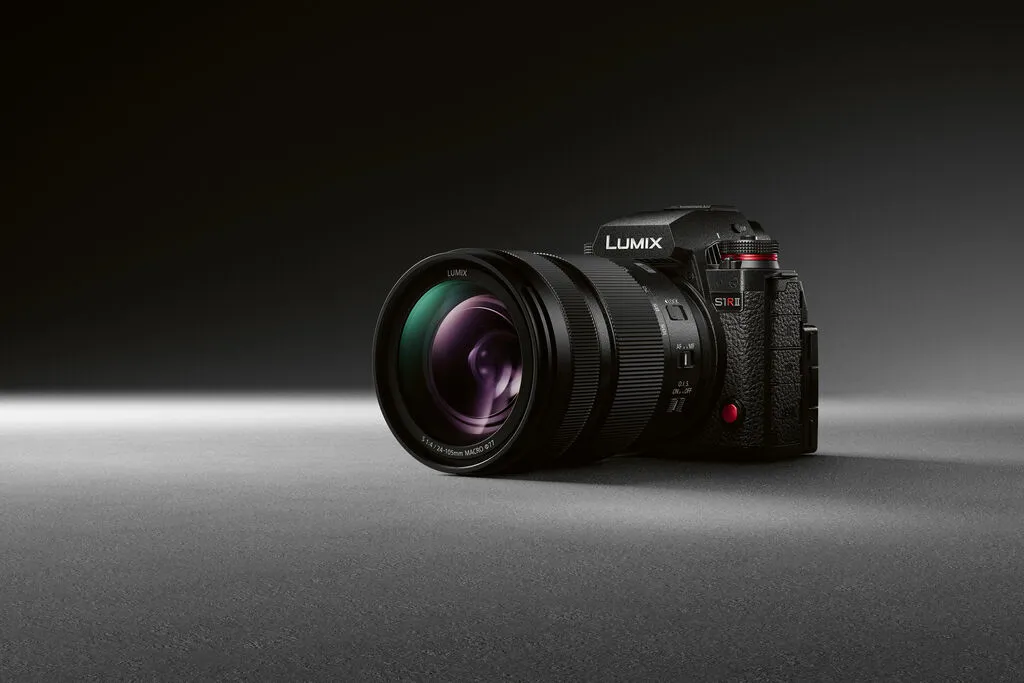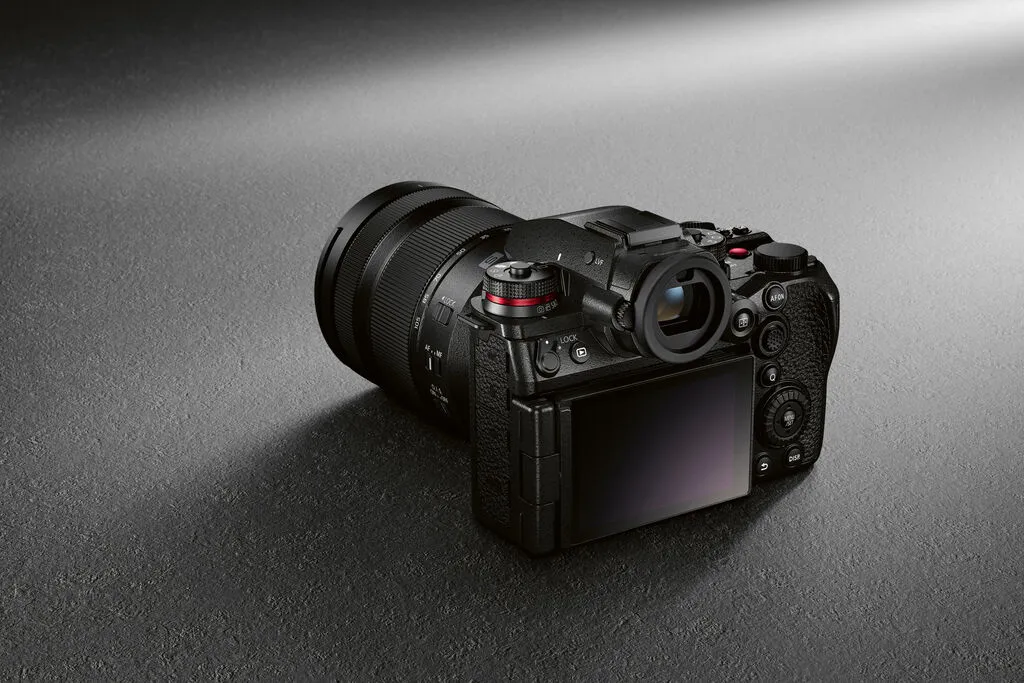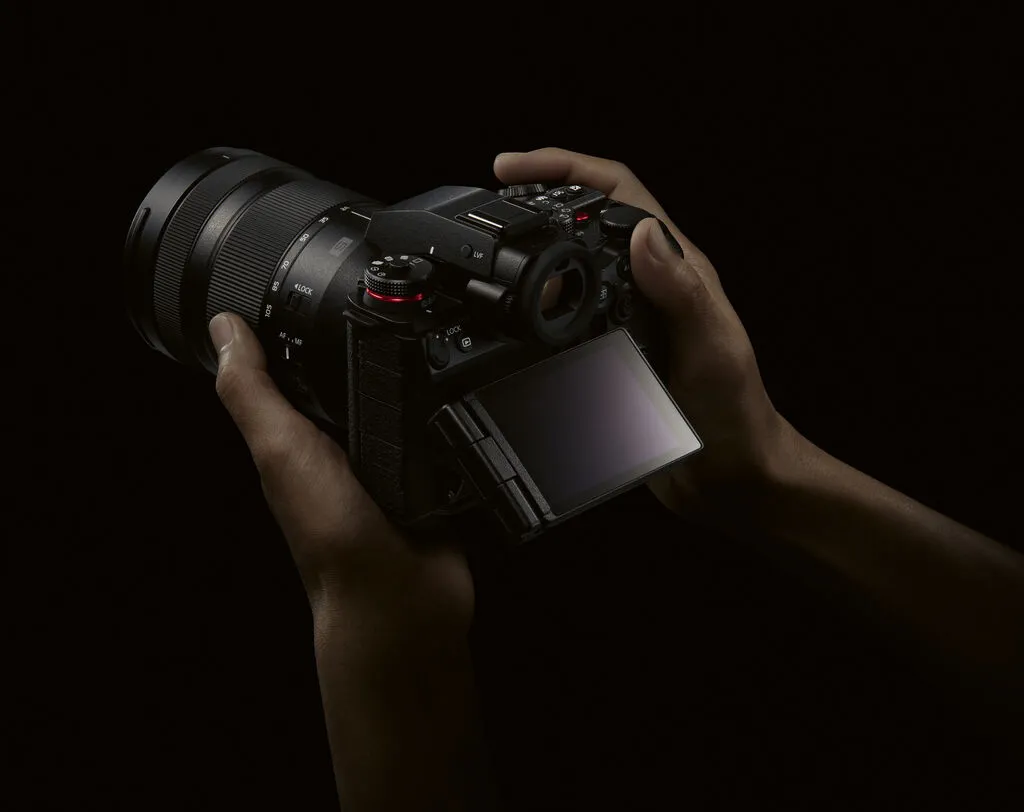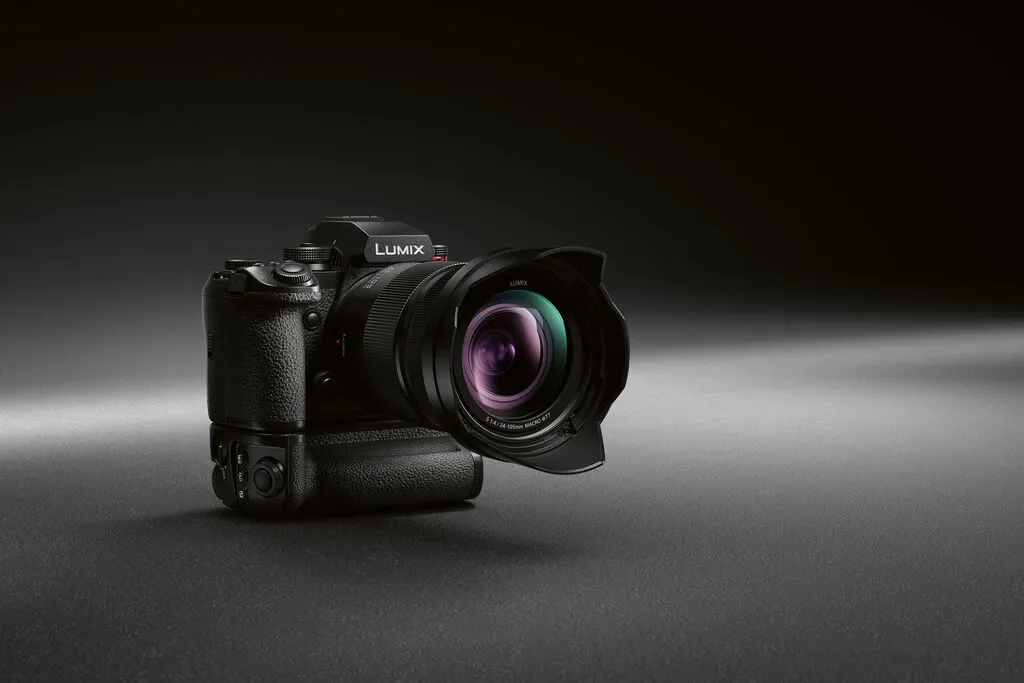
Panasonic LUMIX S1RII released on February 25, the major media and organizations have got the relevant machine for review in advance, the following is a summary of the results of the review, listing the key information that needs attention.
The Panasonic LUMIX DC-S1RII comes with a new back-illuminated sensor (IMX366) that is not stacked and reads at speeds close to that of the 24-megapixel model (IMX410), which means that the bottom of this one isn’t really that fast.
| Base ISO | 2nd gain step | |
| Standard color mode | ISO 80 | ISO 400 |
| Cinelike D2, V2, A2 | ISO 160 | ISO 800 |
| HLG | ISO 320 | ISO 1600 |
| V-Log | ISO 200 | ISO 1000 |
| V-Log + DR Expansion | ISO 400 | ISO 2000 |
Equipped with Dual Conversion Gain (two stops of native ISO), users can manually select two reading modes to suit the needs of different shooting scenarios. The first native ISO comes to 80 in standard color mode.

In terms of focusing performance, the camera is equipped with second-generation image-plane phase-difference AF, as well as significantly improved subject recognition and tracking algorithms, which can recognize a wide range of subjects, including people, animals, vehicles, and more. However, there is still room for improvement in its focusing system, with some scenes failing to focus, and its final performance will need to be further optimized with subsequent firmware updates. Of course there is no mention of an AI chip anywhere, naturally.
The new “Cinelike A2” color mode is suitable for both photo and video shooting, and sits between the “D2” and “V2” profiles, with a softer style to meet the The new “Cinelike A2” color mode is for photo and video shooting, and sits between the “D2” and “V2” profiles, with a softer style to meet specific color style needs. The camera is equipped with a real-time LUT function that can load up to 39 LUTs, and supports combinations of two LUTs with different intensities, making it easy for users to quickly adjust color styles while shooting. For the first time, there’s also a Folscolor option, which helps users get a clearer picture of the exposure in both photo and video modes, and determine which parts of the image may be overexposed or underexposed, for improved shooting accuracy. There’s not much new in this section.

It supports a wide range of video specifications, such as offering resolutions close to UHD 8K, DCI 8K, and an 8.1K resolution option with a 1.89:1 ratio, and features video shooting assistance features common to Panasonic products, such as shutter angle, waveform monitor, and more, as well as support for 4-channel audio and 32-bit Float audio recording via an XLR2 accessory, and adapting anamorphic lenses.
| 422/HQ | |||||
| 60, 50 | 1.04 | ||||
| 60, 50, 30, 25, 24 | 1.52 | ||||
| 120, 100 | 1.10 | 4:2:2 | – | ||
| 16:9 Modes | |||||
|---|---|---|---|---|---|
| 8.0K | 7680 x 4320 | 30, 25, 24 | 1.0 | 4:2:0 | – |
| 5.9K | 5888 x 3312 | 30, 25, 24 | 1.0 | – | |
| 60, 50, 48 | 1.11 | – | |||
| UHD 4K | 3840 x 2160 | 30, 25, 24 | 1.0 | 4:2:2 | 422/HQ |
| 60, 50 | 1.11 | ||||
| 60, 50, 30, 25, 24 | 1.52 | ||||
| 120, 100 | 1.17 | 4:2:2 | – | ||
| 3:2 Modes | |||||
| 6.2K open gate* | 6432 x 4228 | 30, 25, 24 | 1.0 | 4:2:0 | – |
| 4:3 Modes | |||||
| 4.7K | 4736 x 3552 | 60, 50, 48, 30, 25, 24 | 1.65 | 4:2:0 | 422/HQ** |
The camera supports Open Gate shooting, capable of shooting at full resolution from the 3:2 area of the sensor and outputting 6.4K video (higher resolution Open Gate will be supported in a future firmware update), and supports ProRes 422 or ProRes RAW format recording to a CFexpress Type B card or external SSD.
| UHD | DCI | |||
|---|---|---|---|---|
| Crop | Rolling shutter | Crop | Rolling shutter | |
| 8K, 5.xK*, 4K 30/25/24 | 1.00 | 24.9ms | 1.00 | 22.4ms |
| 5.xK*, 4K 50/60 | 1.11 | 15.4ms | 1.04 | 15.3ms |
| 4K 100/120 | 1.17 | 7.3ms | 1.10 | 7.3ms |
| 4K/30 DRExp* | 1.00 | 31.7ms | 1.00 | 29.8ms |
When shooting video, it has a more pronounced rolling shutter phenomenon (big jello) than the stacked sensor models, which is better than the Sony ones but still not as good as the Canon EOS R5 II and Nikon Z 8.
| Output dimensions | Frame Rates | Crop | MOV | ProRes | |
|---|---|---|---|---|---|
| 1.89:1 modes | |||||
| 8.1K | 8128 x 4288 | 30, 25, 24 | 1.0 | 4:2:0 | – |
| 5.8K | 5760 x 4030 | 30, 25, 24 | 1.0 | 422/HQ | |
| 30, 25, 24 | 1.31 | – | RAW/HQ | ||
| 60, 50, 48 | 1.04 | 4:2:0 | – | ||
| DCI 4K | 4096 x 2160 | 30, 25, 24 | 1.0 | 4:2:2 | |
In terms of body design and operation, the Panasonic LUMIX DC-S1RM2 is based on the smaller S5II series, which is more compact and lighter than the initial S1 series, and has a built-in fan and cooling exhaust port, which guarantees a certain degree of stability for long-duration shooting, although not as good as the “GH series”, but also capable of meeting longer-term recording The GH series is a good choice for longer recordings, though not as good as the GH series. Its grip has been improved with a deeper handle. The button layout has been adjusted, with fewer Fn buttons on the front and a new REC button, as well as a dedicated switch for still picture/video/S&Q and a mode dial with a locking function, and a number of customized positions to make it easier for users to set up according to their own usage habits.

The camera’s back monitor is movable in a similar way to the Sony α7R V, combining a tilt and variable angle function that effectively avoids interference with the microphone, headphone, and HDMI connectors, making it easy for users to view the image at different shooting angles.
Battery-wise, the Panasonic LUMIX DC-S1RM2 uses the same 15.8Wh DMW-BLK22 battery as the S5II, which has an average battery life. However, it supports the new battery grip DMW-BG2, which realizes hot-swapping of batteries, allowing the use of both the grip and body batteries to improve the endurance of shooting under high power shooting combinations.

Overall, Panasonic LUMIX DC-S1RM2 as a newly released camera, in the pixel, video features, body design and other aspects of the show a strong competitive edge, the price in the same level of products also have a certain advantage (is expected to the country line debut price of 20998 or so, if it is set at 19,998 that is said to be conscientious, more than 22,998 cost-effective can only be said to be average). But the stability of its focus performance and the control of the rolling shutter during video shooting, etc., still need to further improve and optimize.
Panasonic Lumix DC-S1RII | Canon EOS R5 II | Sony a7R V | Panasonic Lumix DC-S1R | |
|---|---|---|---|---|
| MSRP | $3300 | $4300 | $3900 | $3700 |
| Pixel count | 44MP | 45MP | 61MP | 47MP |
| Sensor type | BSI CMOS | Stacked CMOS | BSI CMOS | FSI CMOS |
| Stabilization (IBIS / Synced) | 8.0 EV / 7.0 EV | – / 8.5 EV | 8.0EV / – | 6.0 EV / 7.0 EV |
| Max burst rate (Mech / E-shutter) | 10 fps / 40 fps | 12 fps / 30fps | 10 fps / | 9 fps / |
| Viewfinder res / mag | 5.76M dot OLED / 0.78x | 5.76M dot OLED / 0.76x | 9.44M dot OLED 0.9x | 5.76x dot OLED / 0.78x |
| Rear screen | 3.2″ 2.1M dot Tilt + Fully Artic. | 3.2″ 2.1M dot Fully Artic. | 3.2″ 2.1M dot Tilt + Fully Artic. | 3.2″ 2.1M dot two-way tilt |
| Max video resolution | 8.1K [1.89:1] / 30p UHD 8K / 30p Full-width 5.9K 60p | DCI 8K / 60p UHD 8K / 60p | UHD 8K / 24p | 5K [3:2] / 30p UHD 4K / 60p |
| Output options | MOV H.264 MOV H.265 ProRes 422 ProRes RAW | MP4 H.264 MP4 H.265 Canon Raw (/Light) | MOV H.264 MOV H.265 | MOV H.265 MP4 H.264 |
| Storage formats | 1x UHS-II SD 1x CFe B External SSD | 1x UHS-II SD 1x CFe B | 2x UHS-II SD / CFe A | 1x UHS-II SD 1x CFe B / XQD |
| Flash sync speed | 1/250 sec | 1/250 sec 1/160 sec | 1/250 sec | 1/320 sec |
| HDR output options (Stills / Video) | – / HLG video | HDR PQ HEIF / HDR PQ video | HLG HEIF / HLG video | HLG Photo / HLG video |
| USB | USB-C 3.2 Gen 2 (10 Gbps) | USB-C 3.2 Gen 2 (10 Gbps) | USB-C 3.2 Gen 2 (10 Gbps) | USB-C 3.1 Gen 1 (5 Gbps) |
| Battery life LCD / EVF | 350 / 300 | 540 / 250 | 530 / 440 | 380 / 360 |
| Dimensions | 134 x 102 x 92mm | 139 x 101 x 94mm | 131 x 97 x 82mm | 149 x 110 x 97mm |
| Weight | 795g | 746g | 723g | 1,020g |
